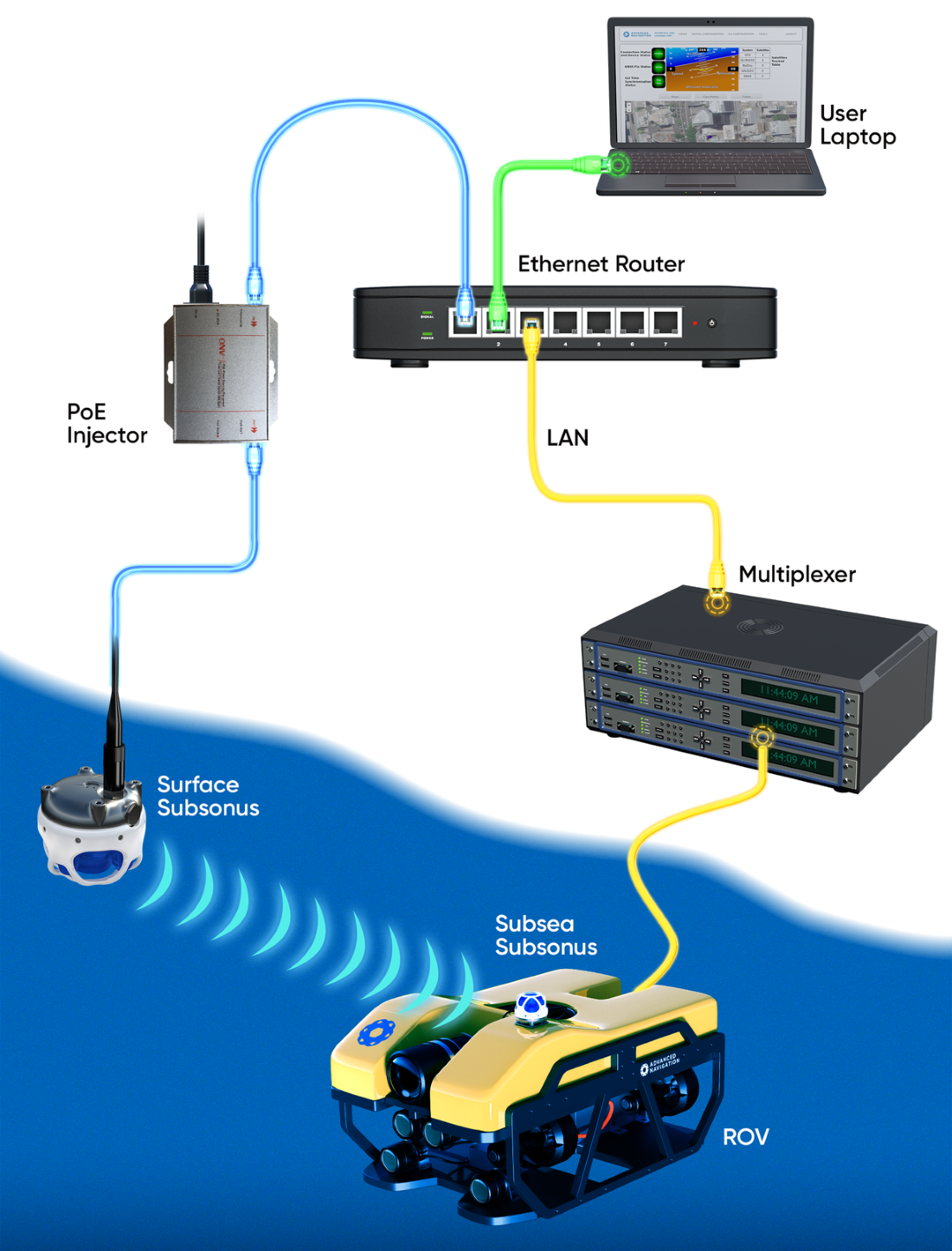Subsonus Data Sharing
Subsonus can share data via an Ethernet network, or acoustically. The data sharing method for a tracked device can be seen in the Device information window of the Subsonus Web UI. See Tracked Devices Configuration
Networked
Network Link Feature
The Subsonus Network Link feature enables automatic high-speed data communication between Subsonus units connected to the same Ethernet network. The purpose of this feature is to maximise performance in applications where a network data link already exists between the two units. A common example is the use of an ROV tether connection to link a Subsonus mounted on the vessel to a Subsonus being tracked on the ROV.
Network Link increases navigation performance by transporting all navigation data that would normally be transmitted acoustically between two Subsonus units. The increase in bandwidth permits a much faster update rate of all navigation data parameters used by the Subsonus INS. It also allows acoustic position updates to occur more frequently by increasing the ping rate.
Network Link will automatically detect the presence of a connection between the Ethernet interfaces of two tracking Subsonus units and begin working. If a problem with the Ethernet connection occurs the units will return to using the acoustic data connection.
Example ROV Network Connection Diagram

Example ROV Network Connection Diagram
Not Networked
When Subsonus is not connected to an Ethernet network, the device functions as an acoustic modem and transports data using acoustic signals. The transfer of navigation data is much slower when using acoustic communication than when the unit is networked.
When a network connection is lost but power is still connected and available, Subsonus will automatically default to acoustic data transfer.